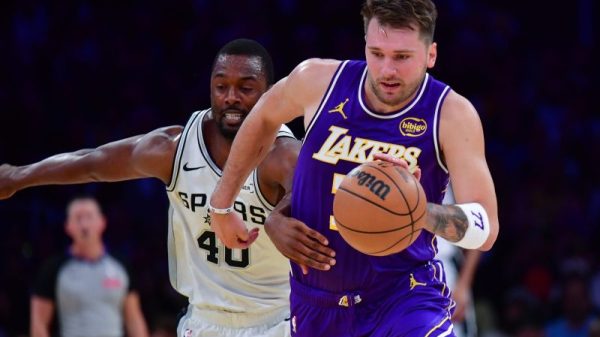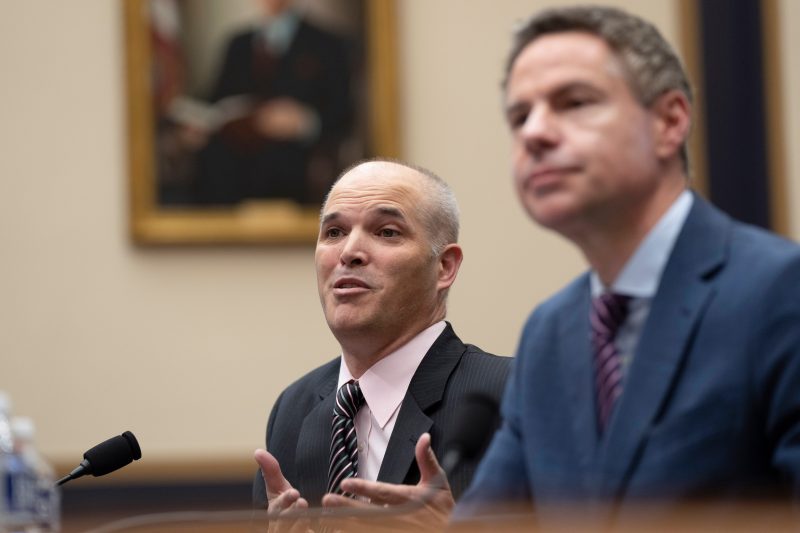LOS ANGELES — Matt Taibbi, who was chosen by Twitter owner Elon Musk to write segments of the controversial “Twitter Files,” announced Friday that he’s quitting the platform to protest new restrictions to links to Substack, a rival newsletter and social media platform where Taibbi is one of the most popular contributors.
The split comes just days after Substack announced that it was starting a new service, Substack Notes, that appears to be a Twitter-like platform.
“It turns out Twitter is upset about the new Substack Notes feature, which they see as a hostile rival,” Taibbi wrote in a Substack post he titled “The Craziest Friday Ever,” adding: “I’m staying at Substack. You’ve all been great to me, as has the management of this company. Beginning early next week I’ll be using the new Substack Notes feature (to which you’ll all have access) instead of Twitter, a decision that apparently will come with a price as far as any future Twitter Files reports are concerned.”
In a tweet, Taibbi also announced his planned departure from Twitter. Earlier, @BigTechAlert, an account that monitors Twitter activity between Silicon Valley and media leaders, announced that Musk’s Twitter account had unfollowed Taibbi.
The split is an ironic development given Taibbi’s role in the “Twitter Files,” Musk’s attempt to expose alleged collusion between previous Twitter management and the federal government to censor conservatives.
Musk did not respond to a request for comment. Taibbi also did not respond to a request for comment. (Disclosure: This reporter has a free Substack newsletter.)
Friday’s events were the culmination of two days of turmoil between the two Silicon Valley platforms. On Wednesday, Substack announced that it would be releasing Notes, which looks like Twitter and functions almost identically to it. The platform had been testing it for weeks, wooing high-profile figures away from Twitter.
On Thursday, Substack writers discovered that they were no longer able to embed tweets in their Substack posts. Writers who tried were met with the message, “Twitter has unexpectedly restricted access to embedding tweets in Substack posts.”
On Friday morning, Twitter began blocking users from retweeting, liking or engaging with posts that contained links to Substack articles. Users also could not pin posts containing links to Substack to the top of their profiles. On Friday evening, Twitter began marking links to Substack as “unsafe.”
Even Substack’s corporate Twitter account was restricted, with users reporting that they were unable to retweet or quote-tweet the handle’s posts.
Twitter had been a primary driver of traffic and growth for many large Substack writers, and many independent journalists were left reeling from the news Friday. Emily Atkin, who runs a Substack covering climate-related news called Heated and joined the platform in 2019, wrote a scathing post on Musk’s decision, accusing him of censorship.
“Hundreds of independent climate publications like HEATED can no longer effectively share their work on Twitter because of Musk — who seemingly only did this out of retribution after Substack launched a Twitter-like feature of its own,” she wrote.
In March, Substack announced that the platform had surpassed 35 million active newsletter subscriptions across the platform and that readers have paid writers more than $300 million dollars through Substack. The top 10 writers on Substack make about $25 million annually combined, the service has said. Substack takes a 10 percent cut of all subscription earnings from writers on the platform.
“Substack is part of a seismic shift in the media economy that gives more power to writers and … creators,” Substack co-founders Chris Best, Jairaj Sethi and Hamish McKenzie wrote in an online statement about Twitter’s new restrictions.
“Writers deserve the freedom to share links to Substack or anywhere else,” the three co-founders said in a statement to The Washington Post. “This abrupt change is a reminder of why writers deserve a model that puts them in charge, that rewards great work with money, and that protects the free press and free speech. Their livelihoods should not be tied to platforms where they don’t own their relationship with their audience, and where the rules can change on a whim.”
In December, Musk temporarily banned links to all other social media platforms, including Instagram, Facebook and Mastodon, threatening to suspend users who used the platform to promote their accounts on other networks. “Twitter should be easy to use, but no more relentless free advertising of competitors,” Musk tweeted at the time.
He quickly rolled back the policy after backlash from large creators and the discovery that such a rule could violate European law.
That same month, Musk shut down Twitter’s Substack-like newsletter platform, Revue. Twitter purchased Revue in January 2021, and thousands of writers leveraged the service to monetize their Twitter followings and integrate their newsletter posts into their Twitter content. After Musk shut it down, many of Revue’s most popular newsletter writers moved to Substack.
“I’ve been so disheartened by what Elon has done to this platform that I used to get so much value out of, it’s clear that they’re very scared,” said Casey Newton, a technology journalist and founder of Platformer, a newsletter that started on Revue but moved to Substack in 2020. “They see that people have other options and they’re starting to use those options, and they want to make that more difficult for people. I think they’re going to find what other social platforms have found, which is that platforms are stronger when they let people move freely between them.”
Twitter generally is considered journalists’ preferred social platform, because of its reputation as a breaking-news hub and the role it plays in the world of politics. Some wondered Friday whether that will continue.
“I wouldn’t have a livelihood as an independent journalist if it wasn’t for Twitter,” Atkin, the climate journalist, said in an interview. “I spent 10 years building a platform as a journalist, and when I finally struck out on my own, that community is what I used to build my audience. I’ll be okay. I already have this audience. But I hoped this would be a path for other independent journalists to create reader-funded journalism, and it’s disheartening to see that taken away over what appears to be a childish revenge plot.”
Several high-profile journalists have already begun to embrace Substack Notes. Judd Legum, who publishes a Substack called Popular Information, which covers politics, said, “I think I’m going to use Notes more because the arbitrary nature of Twitter’s decision-making since Musk took over makes me question whether it’s worth the time investing in that platform.”
Elle Griffin, a novelist and journalist who operates two Substack newsletters, one covering business and one featuring her fiction writing, quit Twitter in the fall after Substack debuted its chat feature.
“At the time it was a lightweight Twitter replacement,” she said. “I think the problem all these Twitter replacements have is getting users, but there are so many Substack writers who already have humongous audiences, so the second Substack launches Notes there’s going to be a struggle.”



























